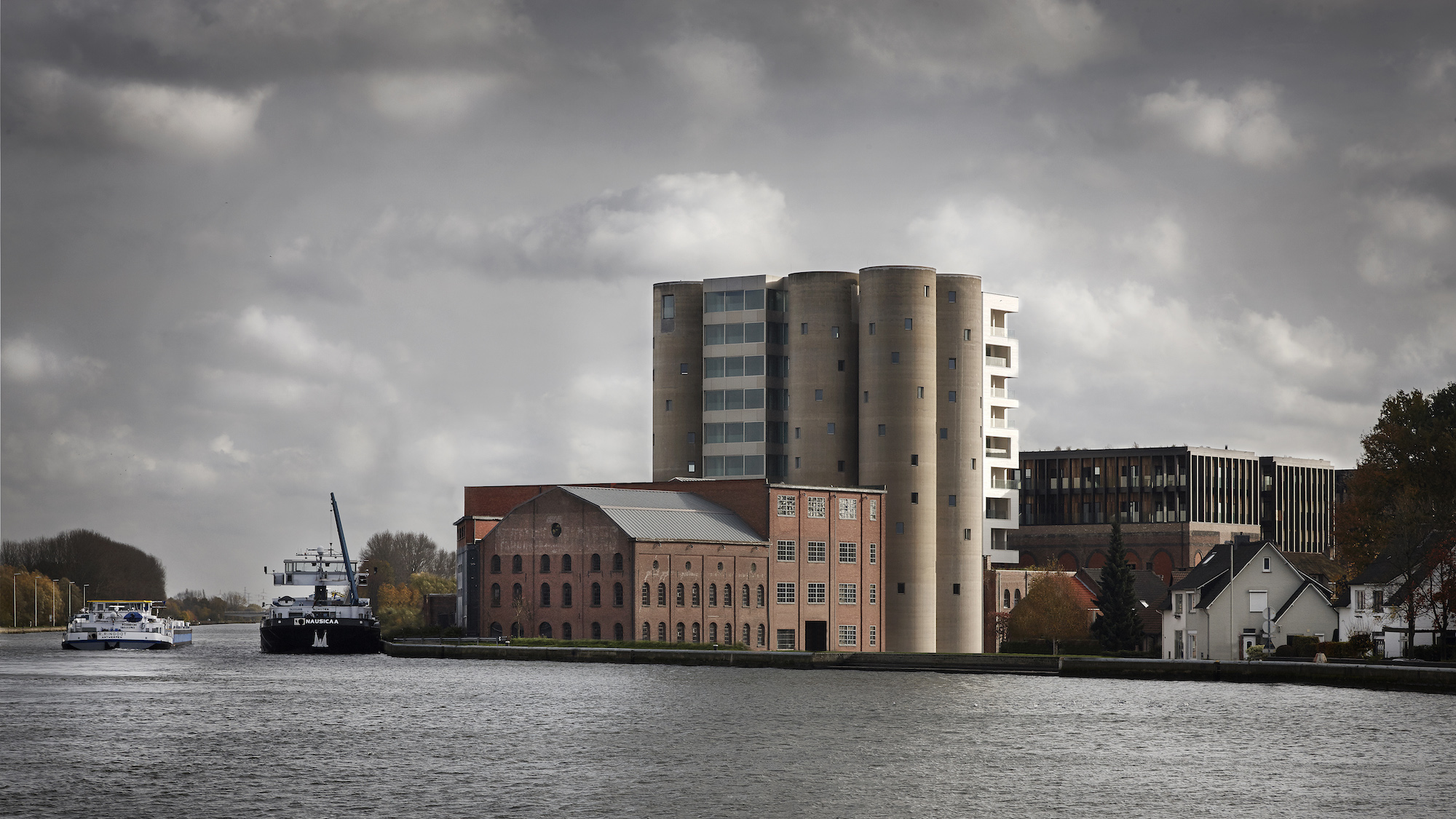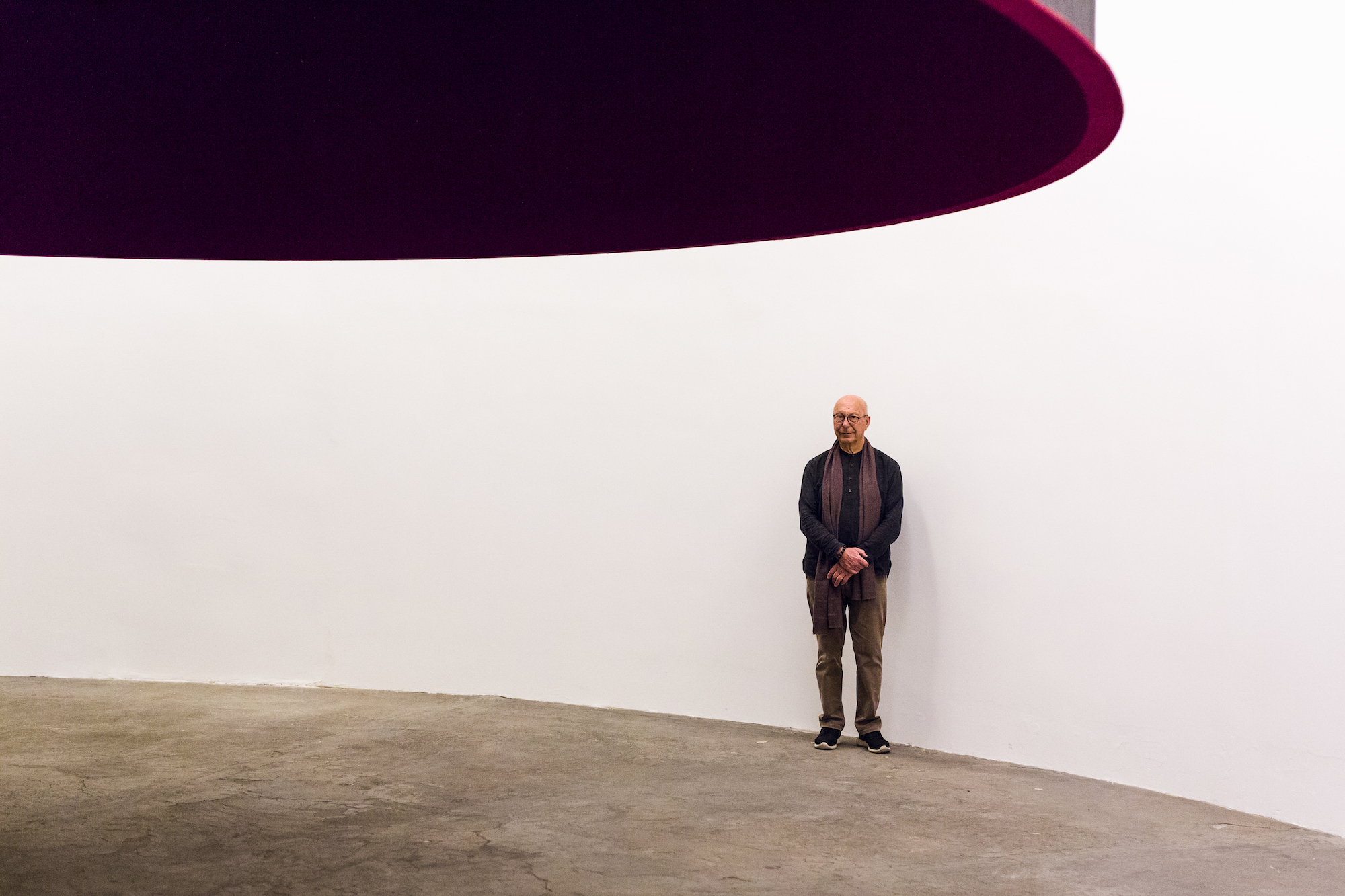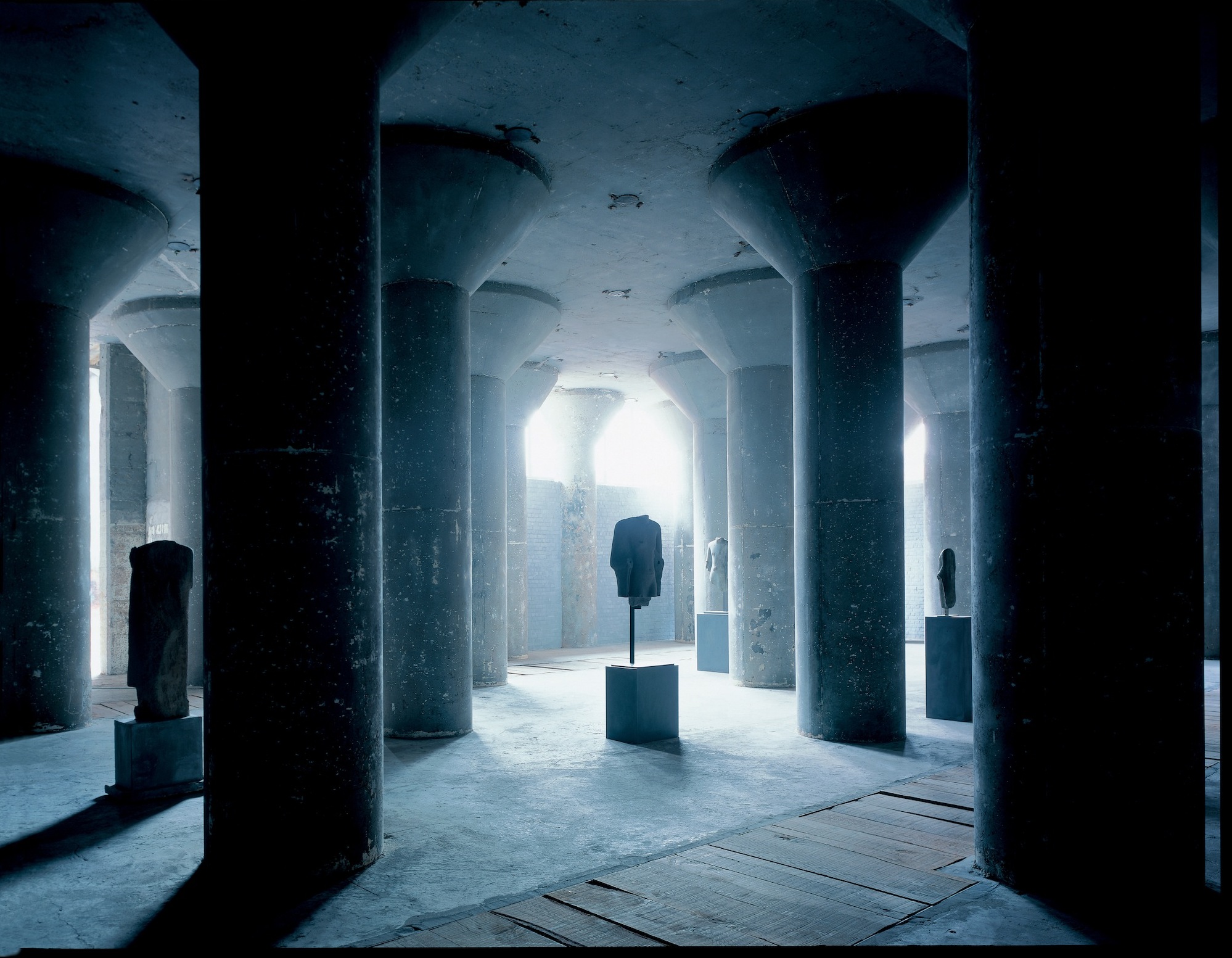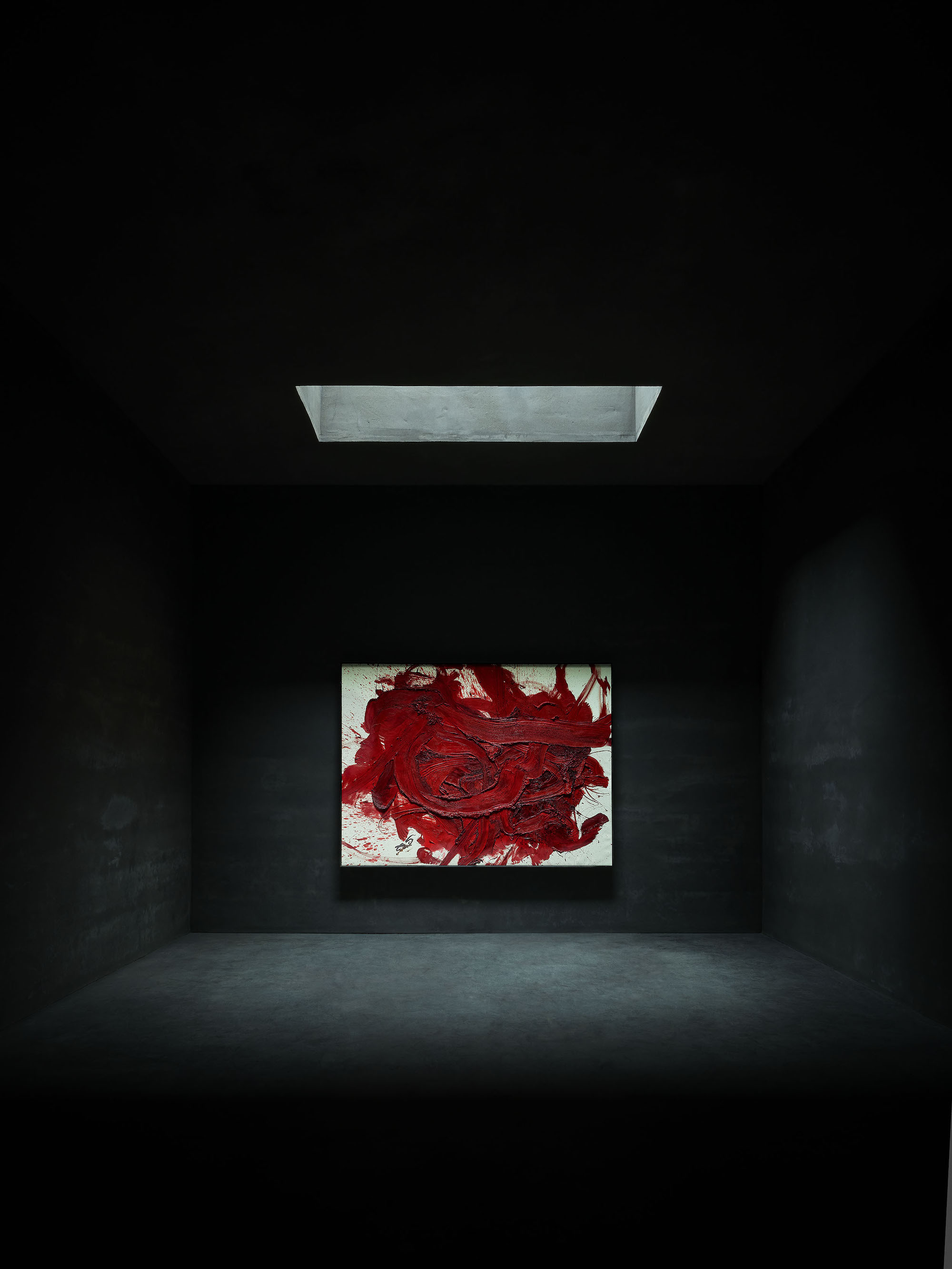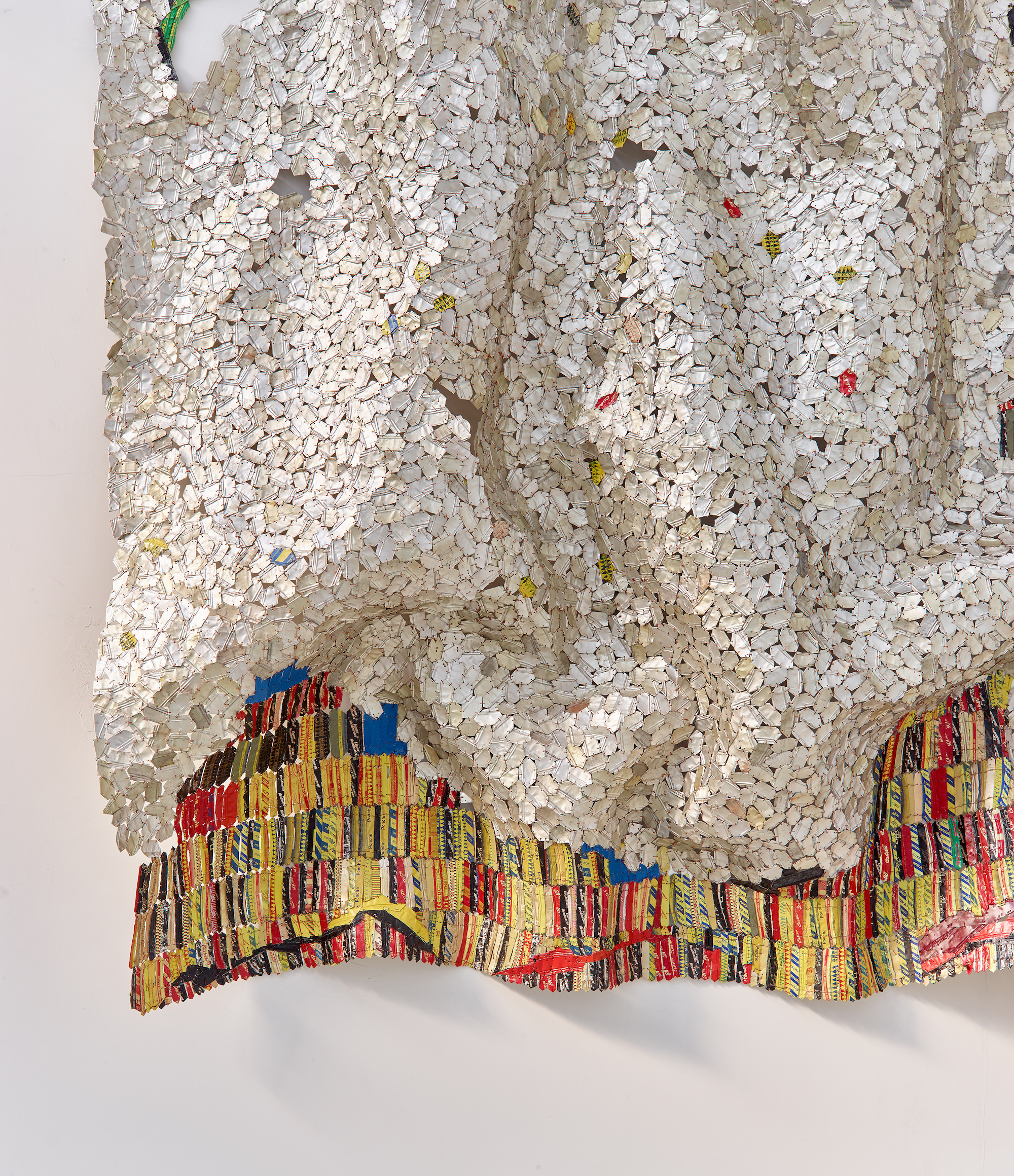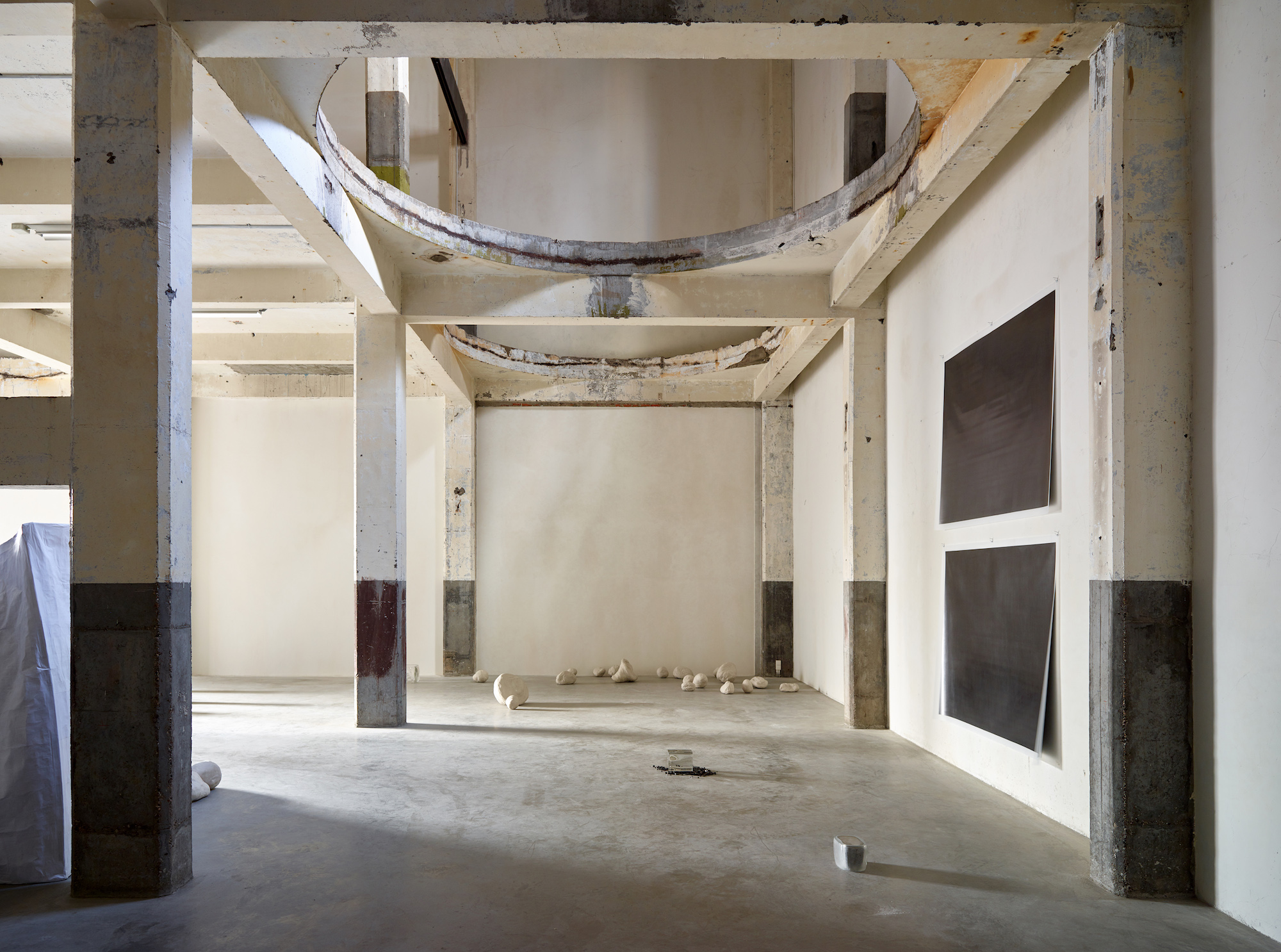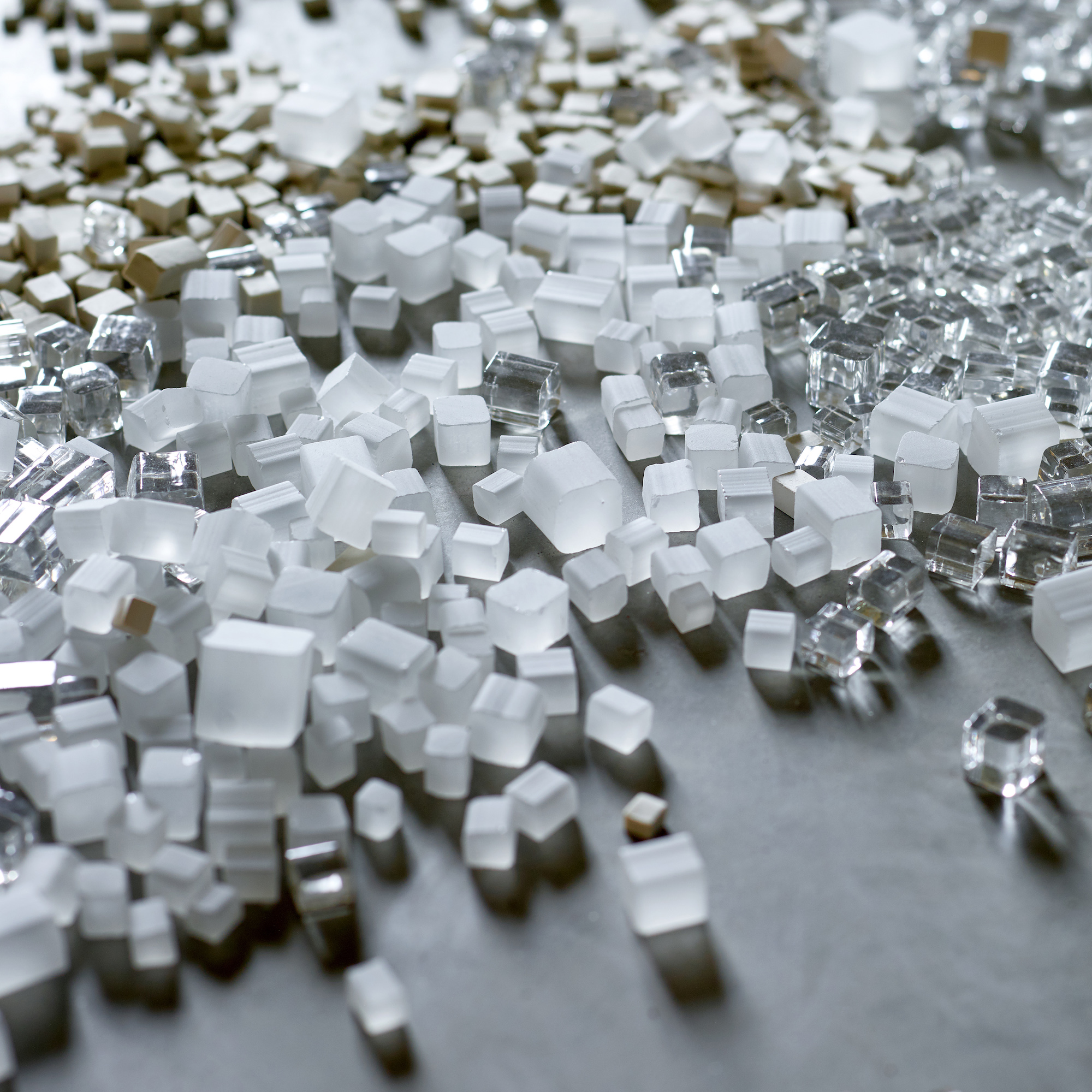Port travels to the Netherlands to meet the pioneer of functional design, Peter Ghyczy, to discuss his idiosyncratic style, following trends and sustainability

Built in 1958 for the Brussels World Fair, the Atomium heralded an era of great optimism and faith in scientific progress. An iron crystal magnified 165 billion times to stand 102 metres high, the originally-temporary stainless steel structure has become an iconic feature of the skyline of the Belgian capital, as well as a symbol of the atomic age – an era similarly commemorated in an exhibition of the Hungarian designer Peter Ghyczy held at the Art & Design Atomium Museum, in the shadow of the great structure.
Ghyczy, who moved first to Germany and then to Holland during the second world war, rose to prominence in 1968 with his Egg Chair. As is the case with much of Ghyczy’s work, the Egg Chair was born of an effort to find a technical solution to a problem – namely having to bring garden furniture in out of the rain. Capitalising on the maleable, colourful and easily-formed properties of polyurethane – the Egg Chair was the first chair to be entirely constructed from the material – the design, which can be closed to protect the fabric seat from the elements, would come to represent the prosperity of the 1960s, as well as establish Ghyczy’s unique, innovative design.
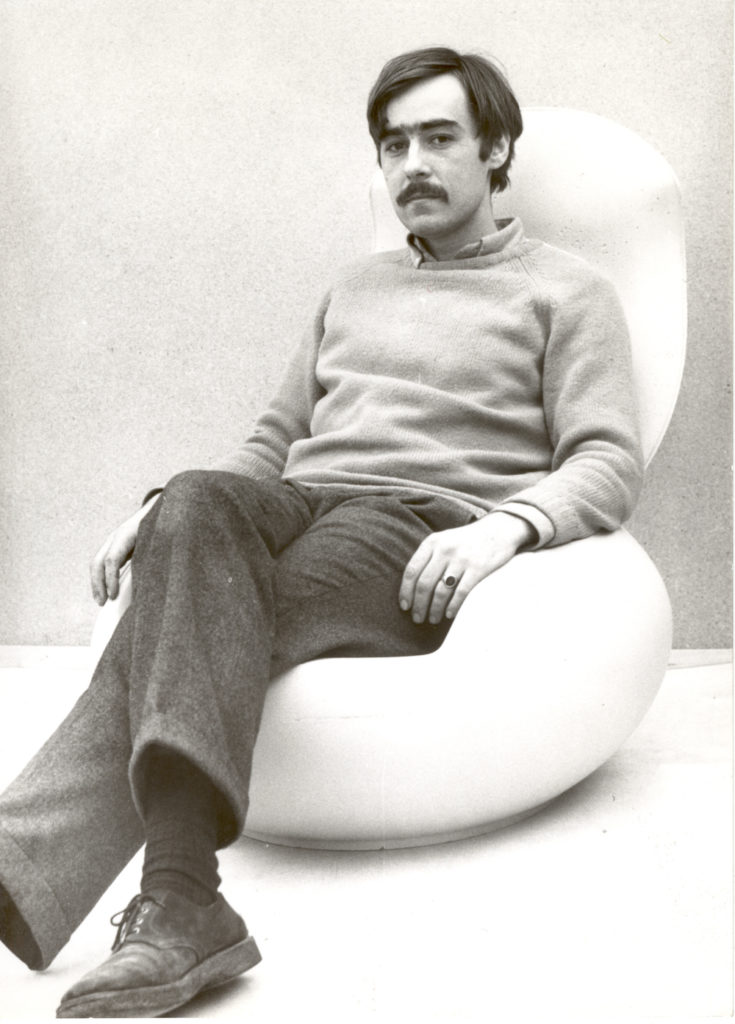
“The first step is the detail.”
I’m sat in Ghyczy’s sun-filled living room in Beesel, surrounded by his designs from over the past fifty years, a few kilometres from the German boarder and Swalmen, where he founded his first workshop and where the company currently manufacturers. The house is not, as I expected from the attitude of his design, minimal and mid-century, but a white-washed estate house, dating from 1560, complete with a moat. Being mid-February the water is half-frozen and, as we discuss his working methods, the light plays across the beams of the high ceiling.
“It’s only once I have the detail, the connection of how to join wood with metal or glass,” he continues, gesturing at the examples around the room, “that I think about what I can do with it. It could end up being a bed or a chair or a table.”
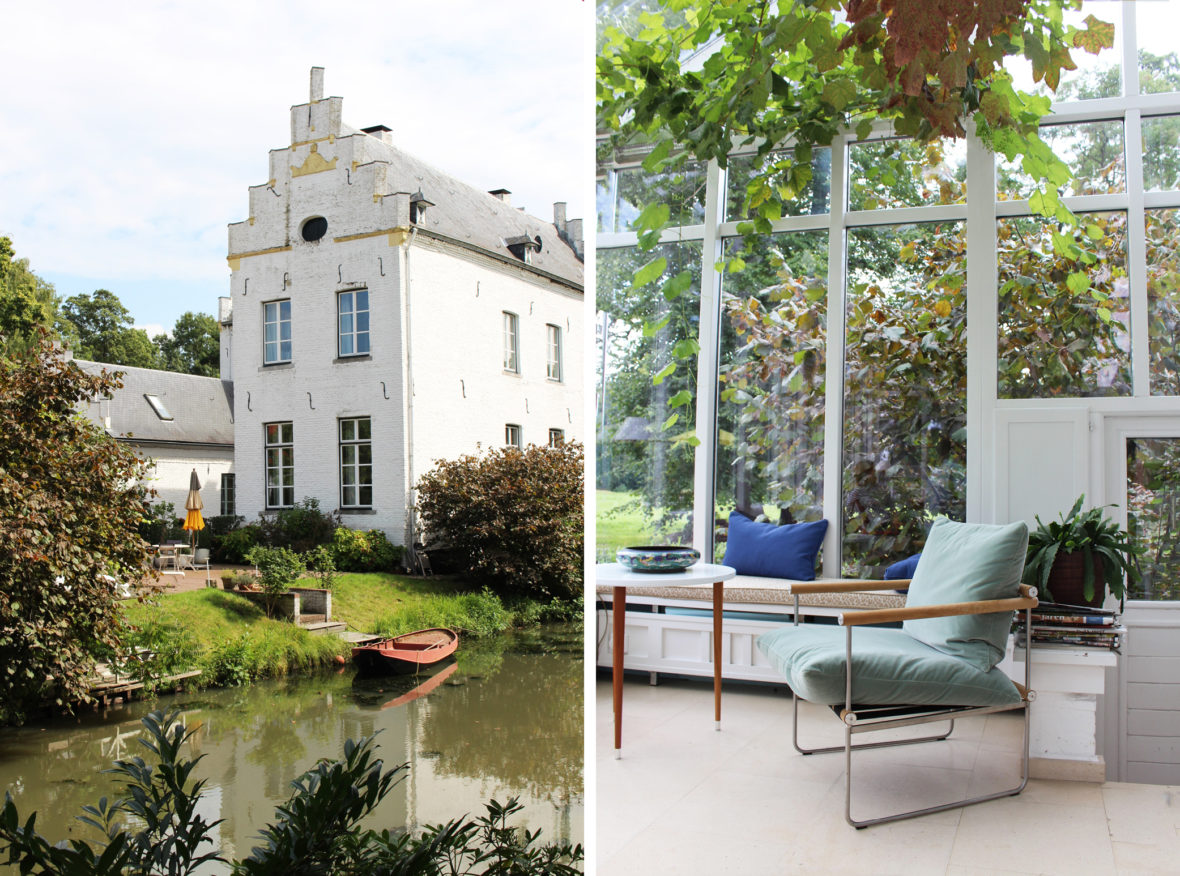
Later, Felix, Ghyczy’s son, who joined the company in 2001, shows me his father’s sketches – sheet after sheet of intricately detailed joints and corners and fittings. Focussing on the specific and technical details before considering the design as a whole is a unique process, but one that lends a pleasingly sparse simplicity to his work, as well as introducing a degree of customisation – the seat-back of a sofa which can be slid along rails to become a day bed, for example.
One of Ghyczy’s very first pieces as a fledgling designer, produced in 1971, the same year that he founded his company, demonstrates this very particular way of working. Having come across an English working tool used to move sheets of glass, Ghyczy noticed that they had potential in a simple, purposeful design. The result, having bought up the last supply of the tools and cleaned and polished them, was the first coffee table to not use a frame – idiosyncratically showing the function, the mechanism by which the table is constructed, rather than hiding it.
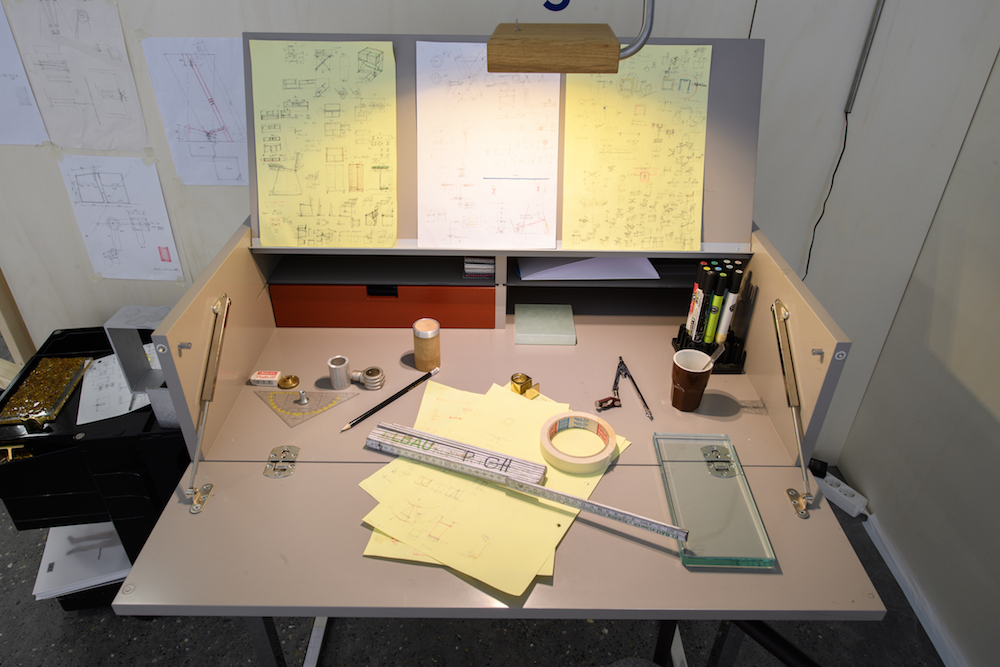
It’s a design – based on technical solutions and a purity of materials – that has come to define Ghyczy’s work over the past five decades, but it is also typical – in finding new use for old materials – of his approach to responsibility as a designer. We talk about this and how the oil crisis stopped work on the Egg Chair, forcing Ghyczy to focus on metal and glass and wood. As it is a prominent topic of discussion today, I ask him what he thinks of the current use and misuse of plastic in design.
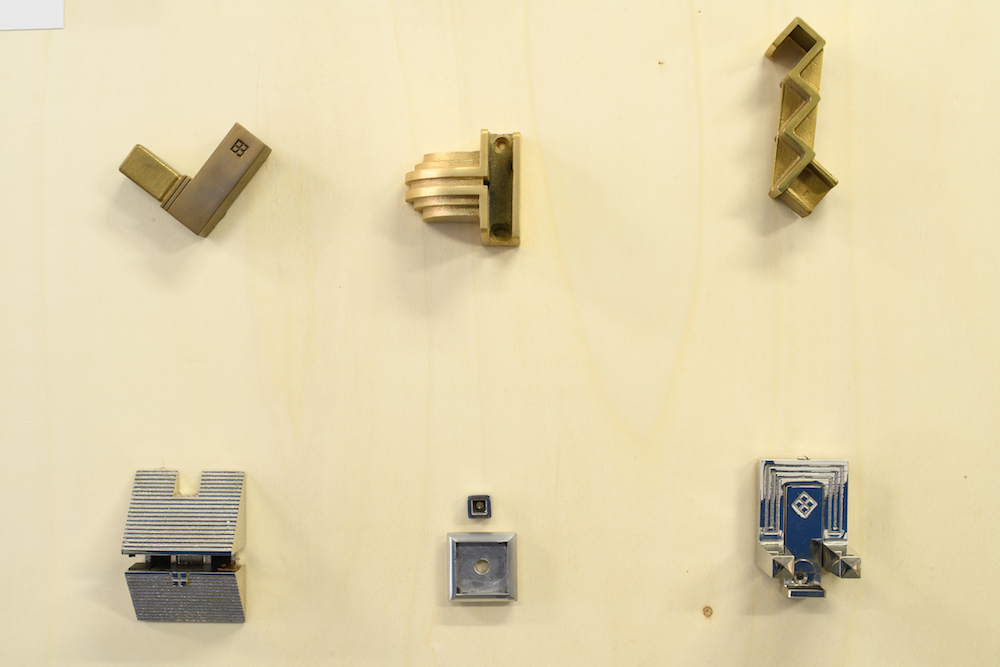
“I think we can’t live without plastic,” he tells me, “but we have to take care not to produce superfluous materials. I try to make a table, for example, that will never be thrown away – it can be disassembled and reused, and hopefully the owner gets the idea that, like a quality watch, the table is constructed so well that it can be handed down to your grandchildren. Some products are designed to be disposed of because they follow the trend – which is why I always avoid what’s fashionable.”
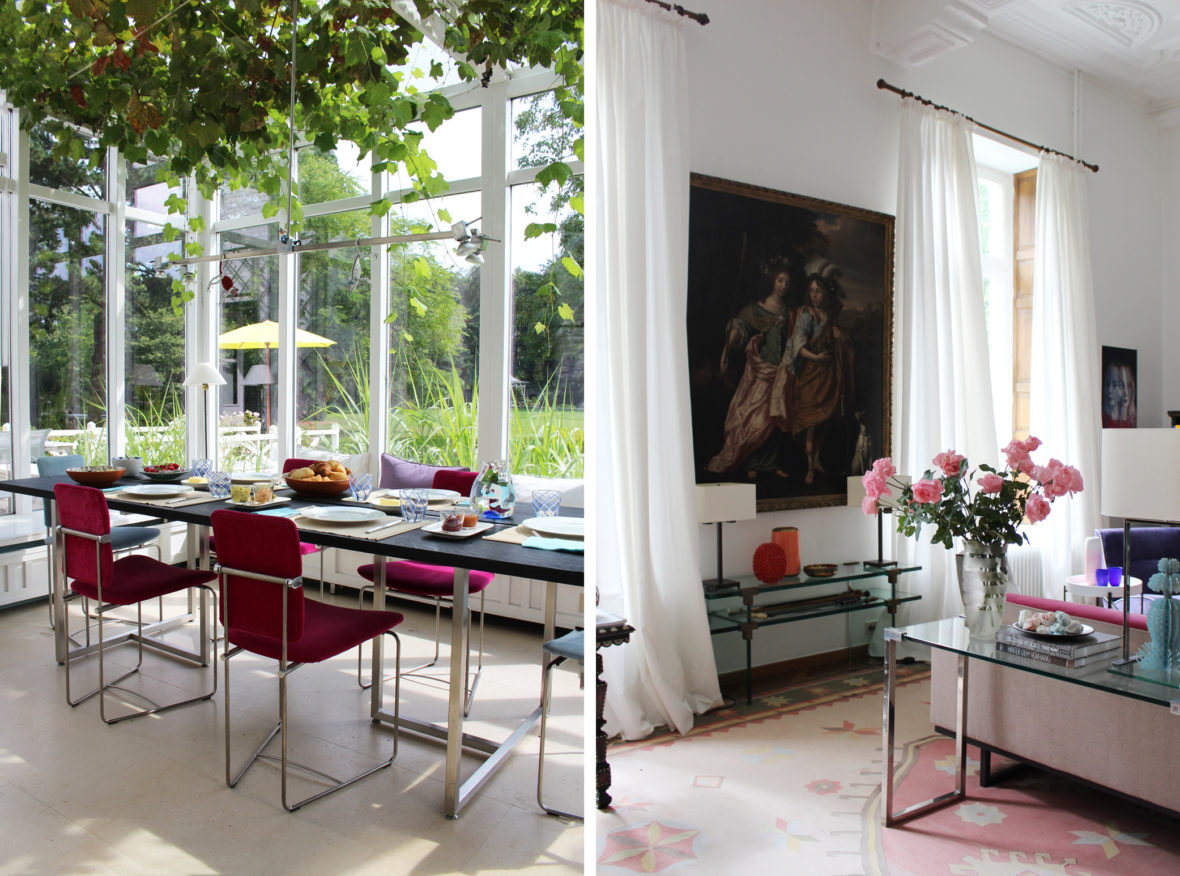
True to form, with the exception of there being less plastic, Ghyczy’s designs have remained reassuringly unchanged over the years, consistently articulating the vision – functional, experimental, innovative – of one man. “I don’t get ideas,” he says, smiling. “They are already in me. I only have to put it down on paper. Success is always down to whether the idea fits the vision.”
Peter Ghyczy: 50 Years of Functionalism is the first exhibition to be devoted to Ghyczy’s work and marks a degree of acceptance from the design community that Ghyczy – a designer who defies trends and has rarely worked outside his eponymous company – has previously enjoyed.
“I’ve always been an outsider,” he tells me when I ask what it was like to see his work in the museum. “I left Hungary and settled in Germany, but remained an outsider, and now I live right on the border in Holland. People didn’t know how to understand me or my work. I never wanted to stay in the light but it now seems that something has happened. I’ve finally been accepted.”
